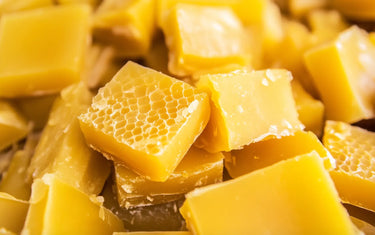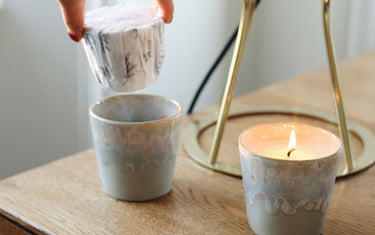5 min read / 5 January 2024 / yasmin sharp
Homemade Soap Packaging Ideas
Explore creative and cost-effective packaging ideas for handmade soaps, suitable for small businesses and eco-friendly approaches.
Share this post

Visual marketing can make all the difference when it comes to your handmade soap packaging, as it can quickly attract and engage potential buyers.
This is especially true for small businesses that do not have a large budget to spend on other forms of marketing, which makes the product packaging even more important.
We’ve put together a few soap packaging ideas you can try for your handmade soap, helping you to get creative without having to impact your selling price.
Why do I need to use soap packaging?If you are selling your soap to customers, you’ll need to consider the following when it comes to soap packaging: Selling at markets and in-person eventsIf you are selling your handmade soap at a market, fair or any other in-person event, there are a few things you’ll need to consider. Customers will interact with the product, and without packaging, the soap will pick up dust and dirt that will affect their aesthetics. Wrapping them ensures they not only stay clean but also remain appealing for people to buy. Soap being given away as giftsSome customers will be buying your soap as a gift for a friend or family member. The vast majority will be attracted to products that are already packaged because they already look like a gift, saving them time and money. You don’t have to use expensive or elaborate packaging, but offering some pre-packaged soap products that are ready for sale will be beneficial for these types of customers. |

Creative soap packaging ideas for your handmade soap
Soap packaging can be created in lots of different ways, depending how much budget and spare time you have available.
Can I use wrapping paper for soap packaging?
A cost-effective option for soap packaging is to use wrapping paper.
There is a huge variety of attractive prints to choose from, so you should be able to find some creative designs that reflect your brand.
And if you want to add a finishing touch, why not include some labelling, twine or ribbons to really make your handmade soap stand out?
Can I use cellophane for soap packaging?
For anyone making melt and pour soap, cellophane wrap is always a good idea.
Not only does it create airtight protection for your handmade soap, but you can take your pick from a wide range of shapes and sizes to suit your tastes.
You’ll also find there are quite a few eco-friendly versions that are biodegradable and compostable, which might be preferable if you are concerned about plastic waste.
Can I use kraft paper for soap packaging?
Another creative soap packaging idea you can try for your handmade soaps is kraft paper.
It ticks a lot of boxes because it is sold in conveniently sized sheets or rolls, with a variety of thicknesses and design styles to choose from.
Plus, it is an eco-friendly option as kraft paper is biodegradable, taking only a couple of weeks to naturally decompose.
Kraft paper is also relatively low cost, so if you are working to a tight budget, this could be just what you are looking for.

Can I use wrap around labels for soap packaging?
You can buy ready-made printed wrap around labels, or you can create your own design.
A big benefit of using these for packaging is that they can help you save a lot of time, as less manual labour is required, making the packaging process more precise and consistent.
They also offer an eco-friendly benefit, as less packaging is used, which helps to reduce wastage and your impact on the environment.
Can I use boxes for soap packaging?
An easy way to package your handmade soap is to use an appropriately sized box for each individual item.
Boxes are available in almost every size imaginable, and you can add your own label and graphics to customise their appearance so they reflect your branding.
This can create a very polished, professional look that makes an instant impression on new customers.
Can I use wax paper for soap packaging?
Wax paper is paper that has been coated with food-grade paraffin wax, which helps it to remain moisture-resistant and nonstick.
This makes it ideal for soap packaging, keeping your products dry so they do not become stuck to the paper during shipping.
If your branding is green focussed, using wax paper can not only give your packaging a rustic appearance, but most varieties are biodegradable, and some can also be used for composting.

What information should I include on my soap packaging?
Whilst the visual presentation of your handmade soap is important, there is also some key information that needs to be included, such as the:
- Company name, logo and product name: You’ll need to make sure your customers can see the name of the soap and the company they have purchased it from. The front of your packaging is a good place for this, along with a company logo to reinforce your branding.
- Soap ingredients: It is a legal requirement for companies selling soaps that contain fragrance or essential oils to display the ingredients. Most brands tend to put this on the back, but you can also use the side or attach a swing tag if that works better.
- Contact information: You are also legally obliged to show the full contact information (physical address, phone, email etc.) of your business on the packaging. This covers insurance requirements and helps to build trust with the customer that they have purchased from a legitimate business.
- Weight and size of bar: The last thing to include is the bar size and weight. A lot of brands place this on the front corner of the packaging, helping customers to quickly compare and understand if it is suitable for their needs.

These are just some of the many soap packaging ideas you can use for your handmade soaps.
Cellophane, kraft paper, wax paper and wrap-around labels are all eco-friendly with lots of design options, whilst boxes and wrapping paper can also help you present your products in the right way.
Also plan how you will include product information on the packaging, such as its size and weight and ingredients, company branding, product name and business contact information.
It may sound like a lot to remember, but once you get a process in place, you’ll soon be wrapping your presents like a pro!









